In my first review of the Kimber Camp Guard 10, I addressed the basics and technical observations of the pistol. It has been a journey getting the pistol to perform as expected, or at least what I expect from the pistol.
In part 2 of the Kimber Camp Guard 10, I want to address several updates both aesthetically and operationally.
Topping things off is the Rocky Mountain Elk Foundation themed rosewood grip panels. As much as I like these grip panels, a set of Altamont 1911 Govt. Round Heel Super Walnut Leather Texture grip panels in ‘Silverblack’ replaced them. Changing grip panels on 1911 pistols is commonplace to personalize the pistol and the ‘Silverblack’ edition was selected due to the two-tone nature of the pistol, and I felt that it would be a better balance of look. The package is almost too nice to carry.

The laser-etched texture of the grip panels, along with the 30-lines per inch of front strap checking coupled with the back strap vertical serrations, makes for an extremely comfortable but effective grip. The Altamont grips panels are also very aesthetically pleasing to the eye.
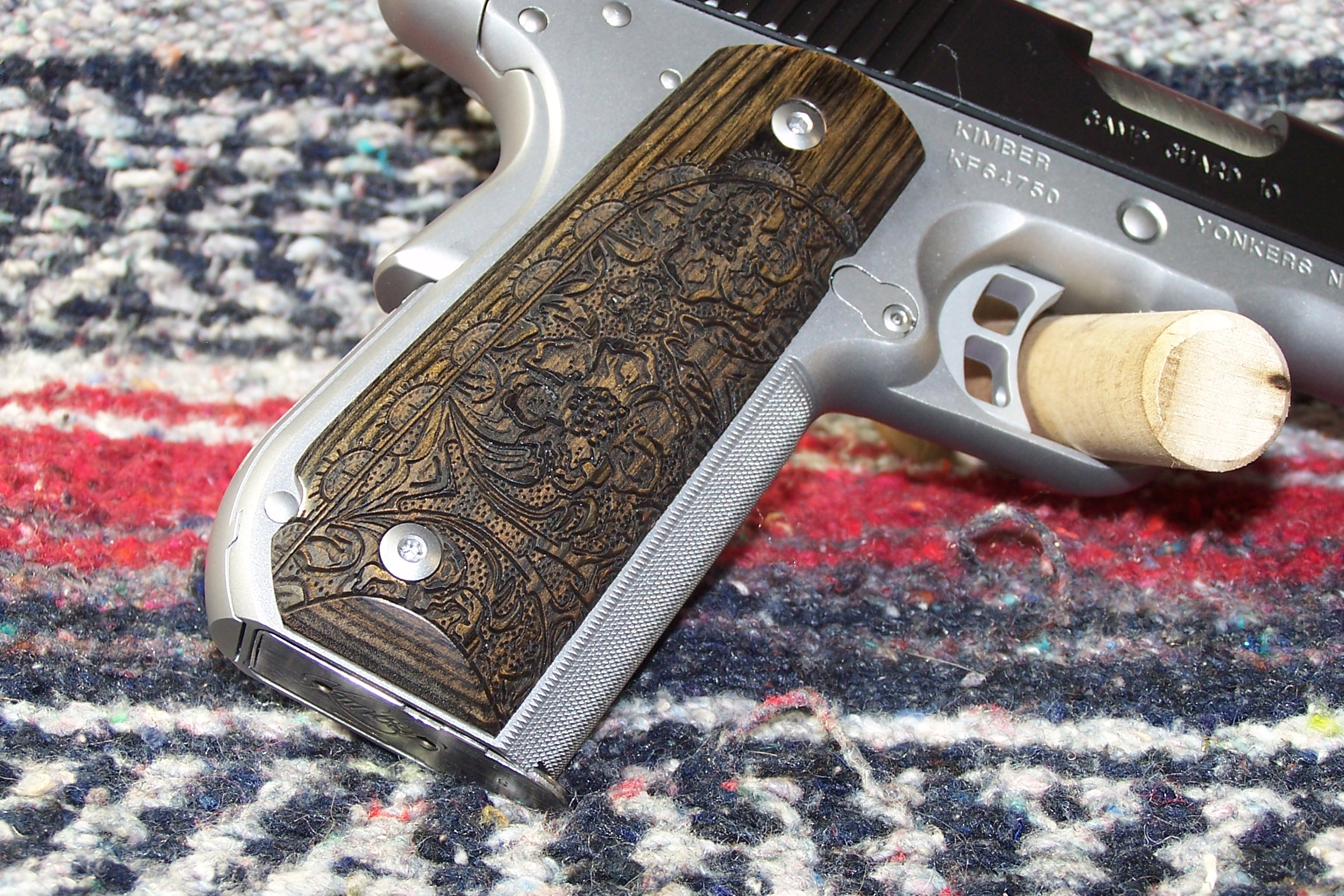
(Author’s Note: While the Altamont Altamont 1911 Govt. Round Heel Super Walnut Leather Texture grip panels are excellent, I prefer a set of ‘Black Pearl’ or ‘Silver/Black Carbon Fiber’ grip panels for this firearm. A search for such is in the mill.)
Grip Update – December 23, 2019
An awaited set of grip panel arrived today and was installed post haste; the round-butt version of the 1911 Mayhem Dark Red Black G10 by LOK Grips, which are shown below.
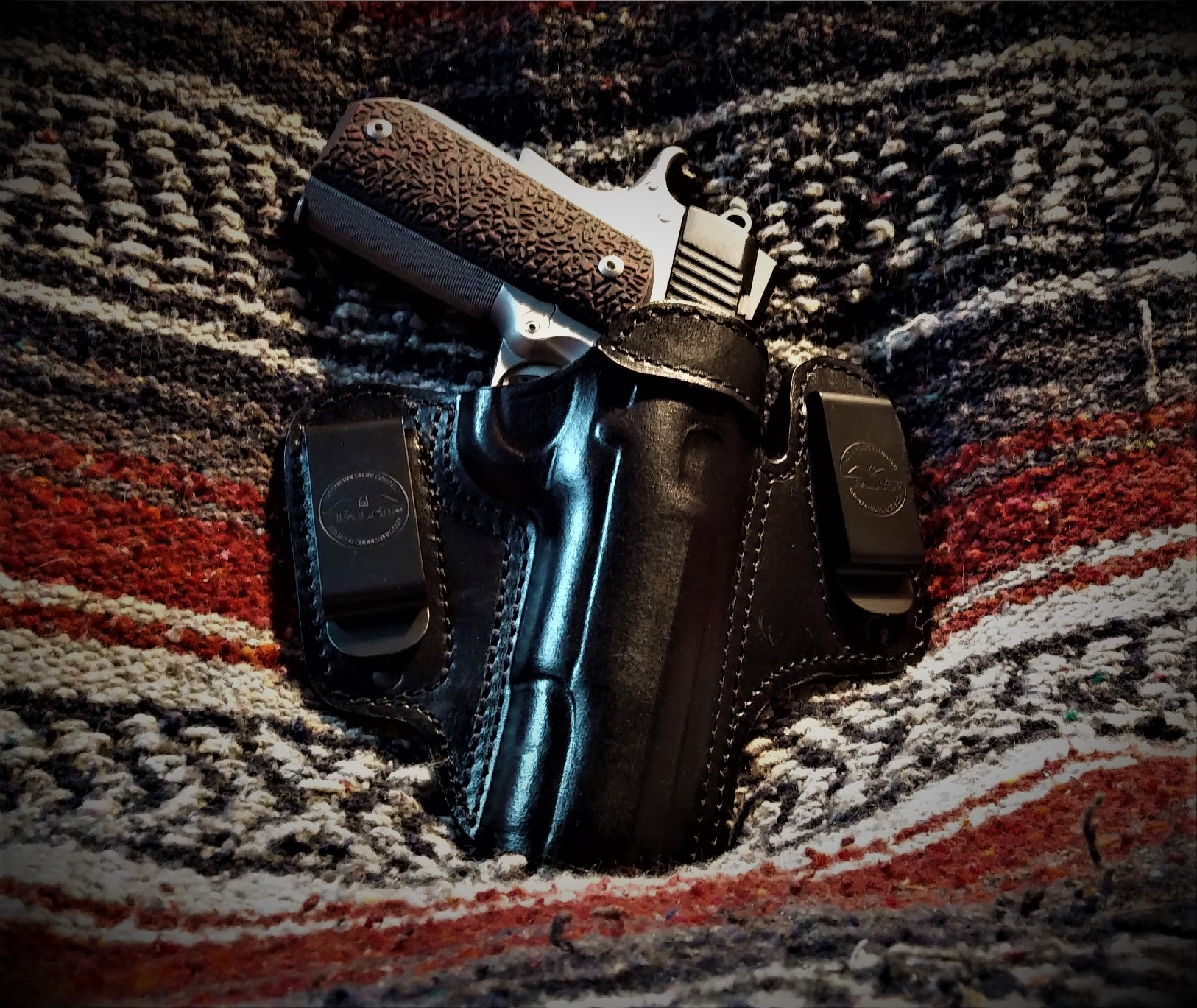
I think that these grips fit the character of the pistol very well. When you pull the trigger on this thing, mayhem is sure to follow.
Update 11/11/2019
I read, this morning, that another user of the Kimber Camp Guard 10 had experienced FTFs with the Sellior & Bellot 180-grain FMJ ammunition. It was time to experiment.
I had some “Snap Caps” on hand and proceeded to manually attempt to feed them using the various magazines on hand. Not one failure to feed with any of the magazines. This led me to agree that the FTFs that I was experiencing was, indeed, ammunition related. To strengthen my belief, I manually fed a number of Sig Sauer 180-grain JHP ammunition through the pistol; something I had not done during the range outing due to the number of FTFs that I experienced. There were absolutely no failures to feed…not one.
With the above considered, I have ordered a number of Magtech 180-grain FMJ ammunition. I have used Magtech ammunition in the past in various calibers without issues. I will provide an update to this article after testing the Magtech ammunition.
Update 12/08/2019
Well, I was finally able to get back to the range, with the Magtech 180-grain FMJ ammunition, and continue the break-in for the Kimber Camp Guard 10. It was a rough day on several counts.
This was the first day back to the range after major surgery on my left arm and leg. Walking and standing for any length of time was extremely bothersome. Nevertheless, I was bound and determined to give it a try and get some rounds put through the Kimber Camp Guard 10.
Starting out with a cold barrel was fine, but as the barrel started heating up the failure-to-feeds (FTFs) started. Feeding was intermittent, but somewhat better than the last trip. The kimber Camp Guard 10 is still not ready for prime time. I’ll update at the next range session with her.
Update 10/20/2020
That’s right, the date does not lie. Due to some health issues and an extremely arduous work schedule, I had not been able to get back to the Kimber Camp Guard 10 to continue its break-in until recently.
The trip to the range did not garner any better results than the last time, although there was a mild improvement.
The Kimber was getting close to being called “an enemy of the estate” since its performance was falling way short of what I consider acceptable. I decided to take a deep breath and look at things a bit closer before I decided to send it back to Kimber for repair.
I was dry-cycling some ammunition when I saw a definite gouge in the case. I could feel it with my fingernail. The only place I could think of that would gouge the case was the top of the feed ramp as the cartridge was being forced into the chamber. Note that the case was not dented, it was gouged.
I closer inspection revealed that the top of the feed ramp was not smooth as it should be. A Dremel, buffing wheel and compound soon smoothed out the top of the feed ramp. I polished out the remainder of the feed ramp while I was at it.
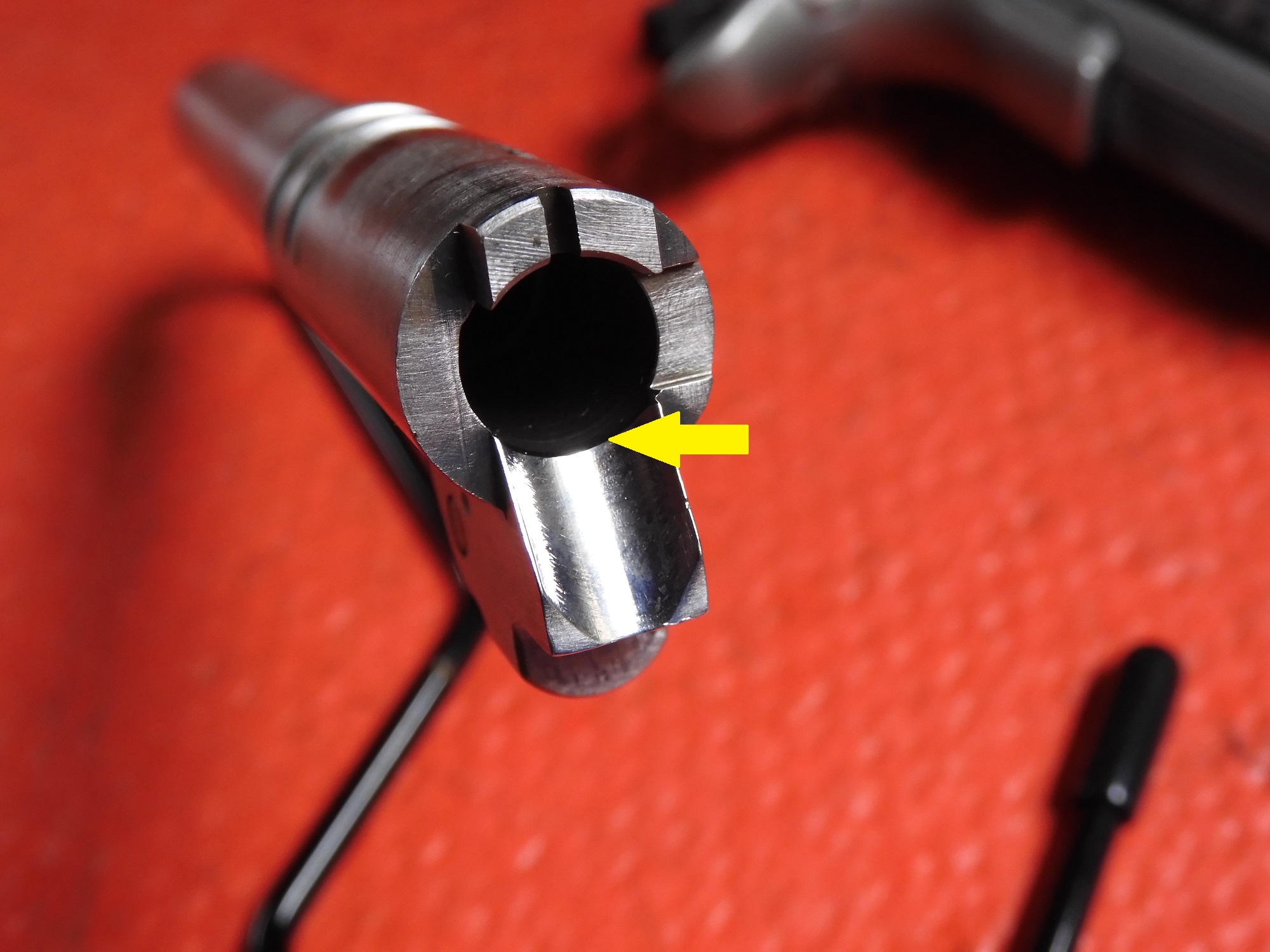
Update 11/16/2020
Another trip to the range yielded better results. At least the cases were not being gouged by the top of the feed ramp, perhaps an improvement since I had polished the top of the feed ramp. However, and even though the feeding was getting better, I still was not satisfied with the FTFs that did happen. I was approaching about 300 rounds through the pistol and I felt that there should have been a better improvement in performance than what I was seeing.
When I broke down the pistol for cleaning after the range session, I noticed something else that I had missed. The very bottom of the feed ramp, and on the underside where the barrel hits the locking block, was a very small ridge. Perhaps it was caused by the machining process of the feed ramp. Regardless, this surface needs to be flat. Any protrusion, albeit small, would cause the rear of the barrel not to contact the locking block properly. Could the ridge be enough to raise the top of the feed ramp just enough to affect feeding? After all, if the top of the feed ramp was just a bit higher, the angle of feed is affected. It made sense to me and I made plans for its removal.
Note that the barrel type of the Kimber Camp Guard 10 is a Wilson/Nowlin type. You can view the differences between these barrels by click here.
A very fine file, Emory board, and fine polishing was brought into play. After a bit of time, the ridge was no longer detectable. A test fit of the barrel ensured me that the face of the locking block and the bottom surface of the match barrel was mated as closely as I could make them. With these pistols, even a thousandth of an inch can make a difference.
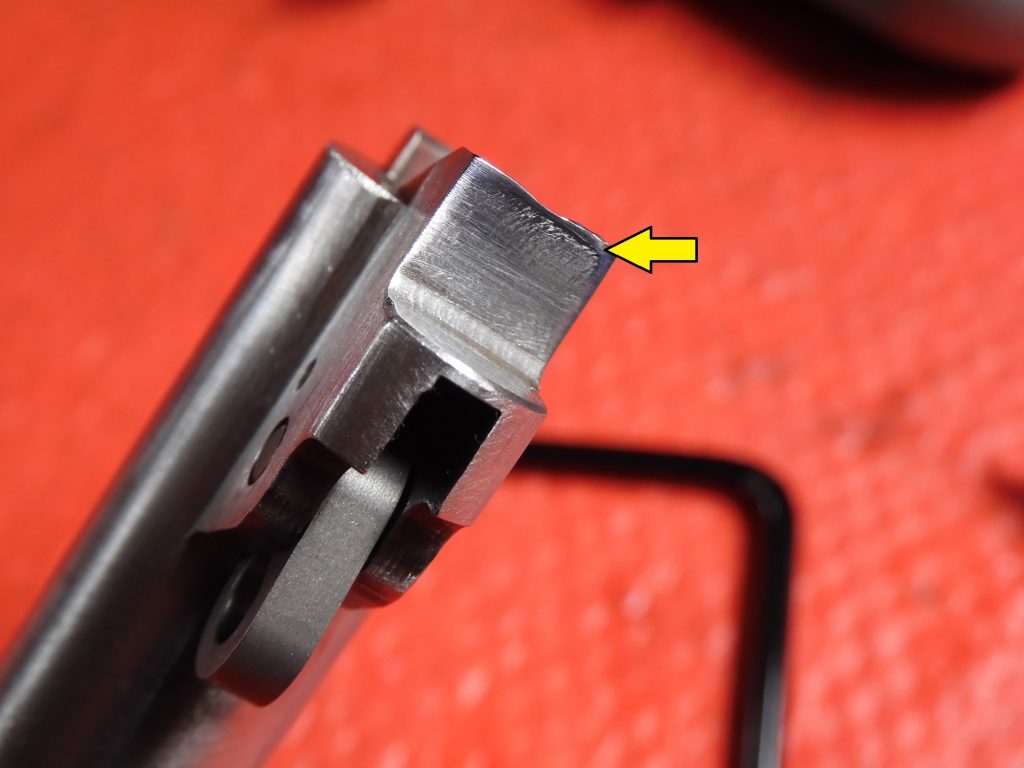
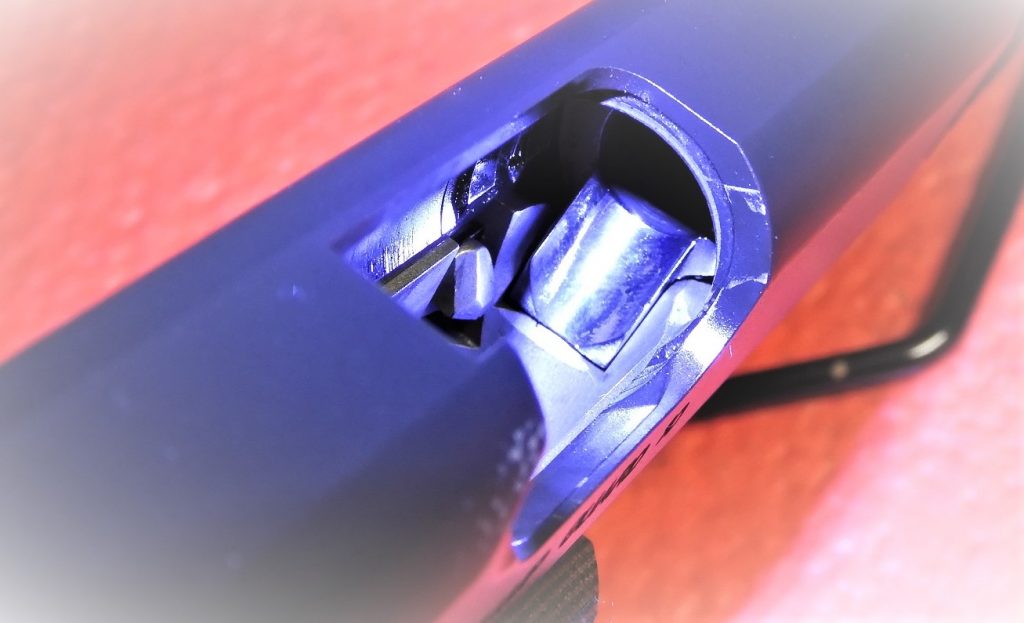
Update 01/02/2021
The Kimber Camp Guard made it to the range again. I was extremely interested to see if any of my ‘improvements’ would help mitigate the FTF issue.
I am pleased to say that out of fifty rounds fired, I had only one FTF, and that came from an ACT MAG. The Ruger, Kimber, and Wilson Combat magazines ran without fail. I did have; however, three FTEs.
I ran a test to see if there was enough extractor tension and there was. It would seem that I have another problem for another day.
I also ran a magazine full of SIG Sauer V-crown 180-grain JHP (1250 fps) through the Kimber Camp Guard 10 and it ran them accurately and without fail during a quick Mozambique drill.
The Kimber Camp Guard 10 may be coming around, but we still not have crested that 500 round minimum break-in number.
![]()

